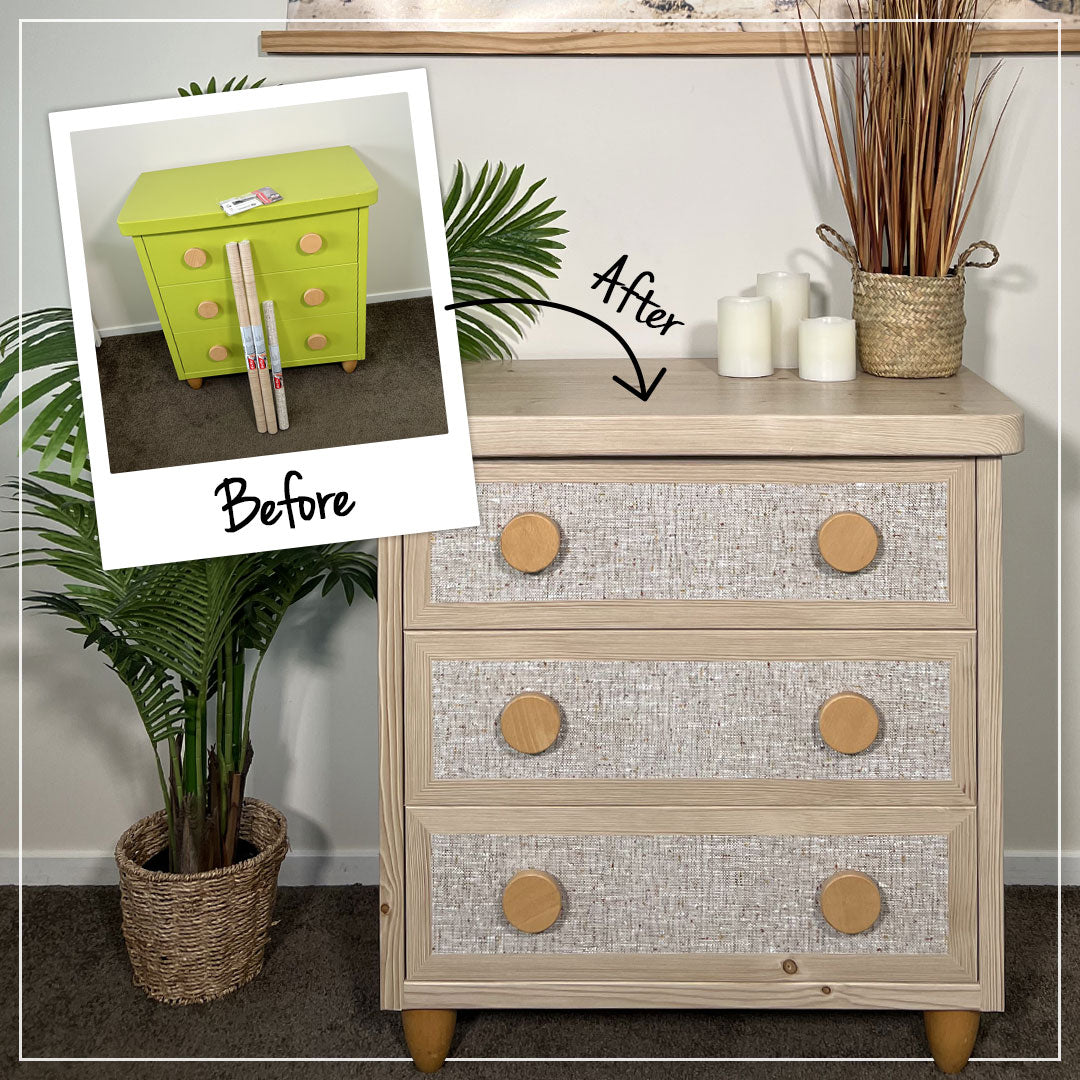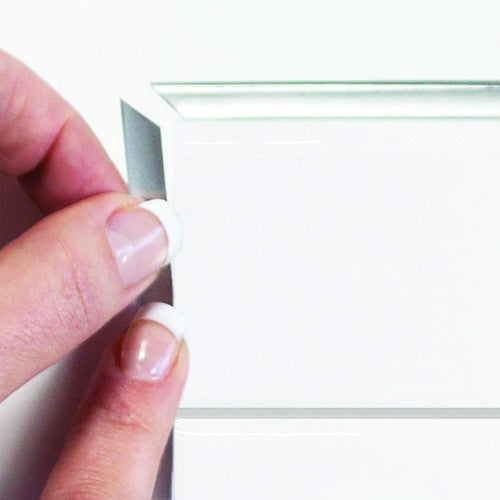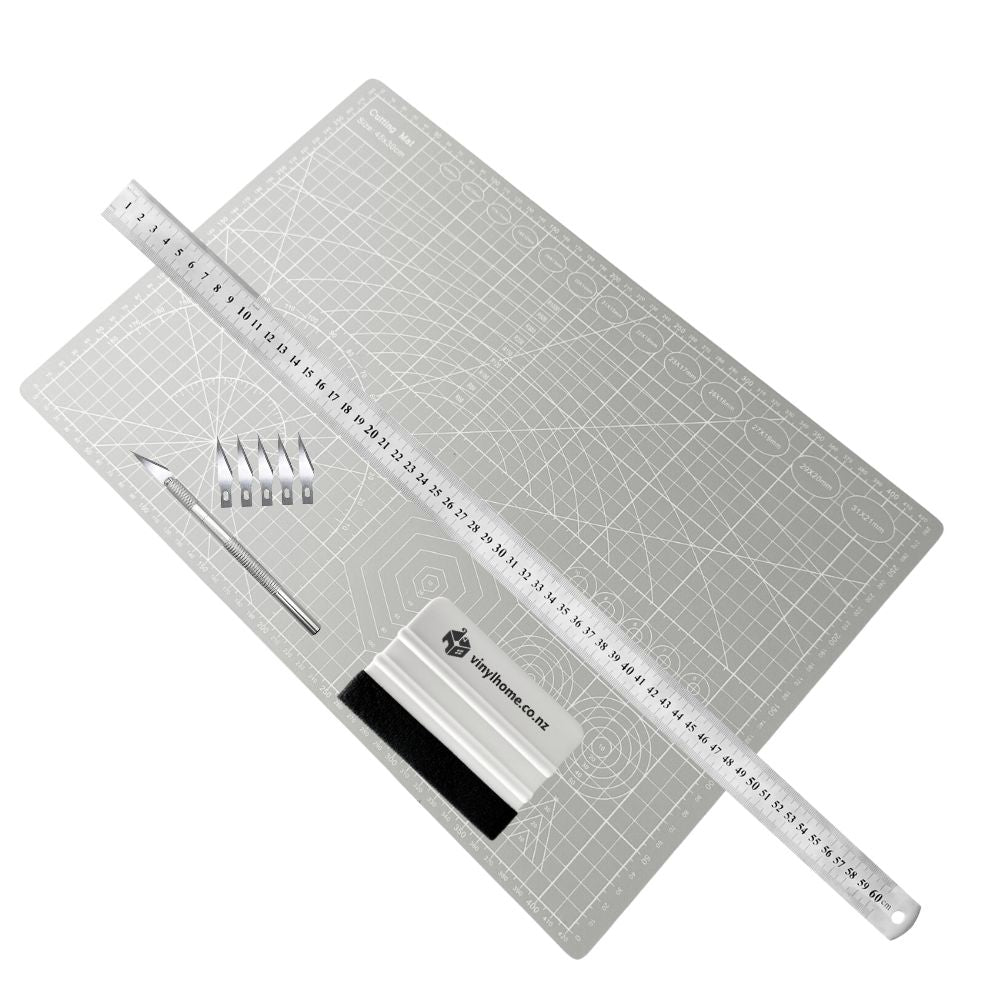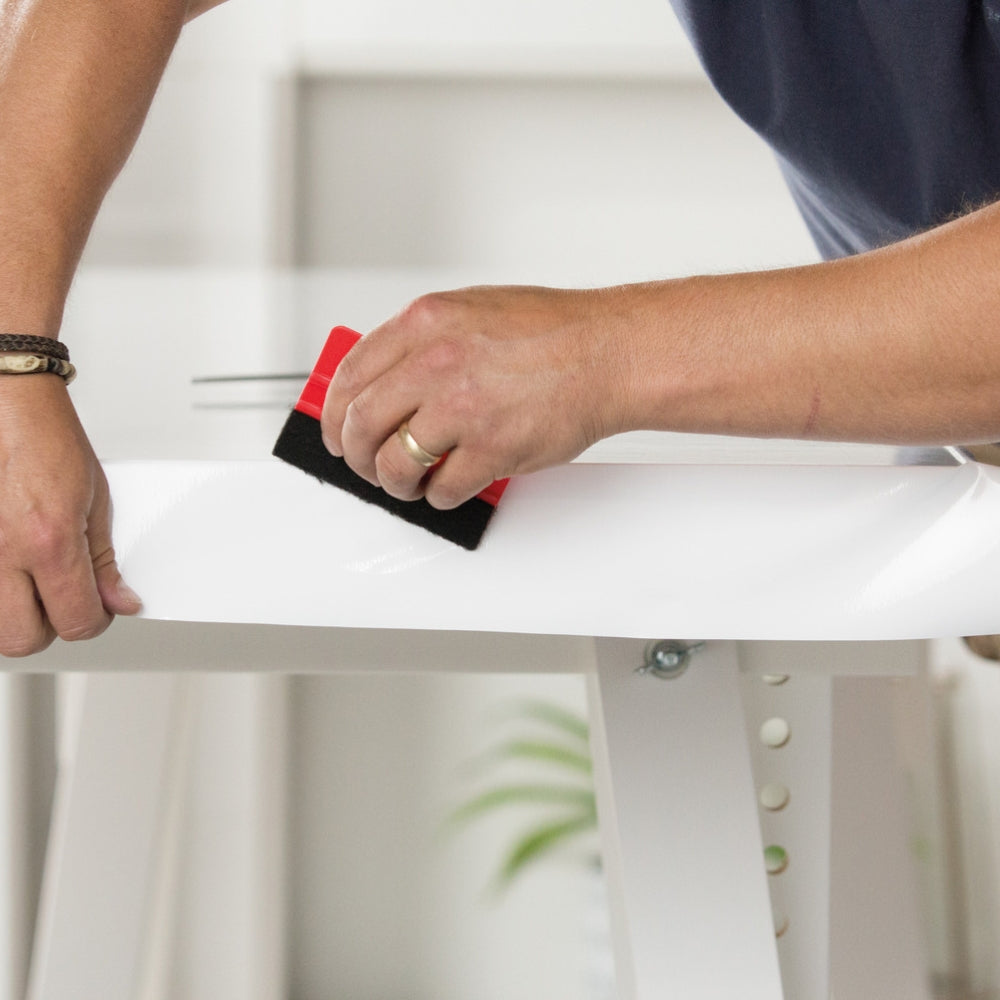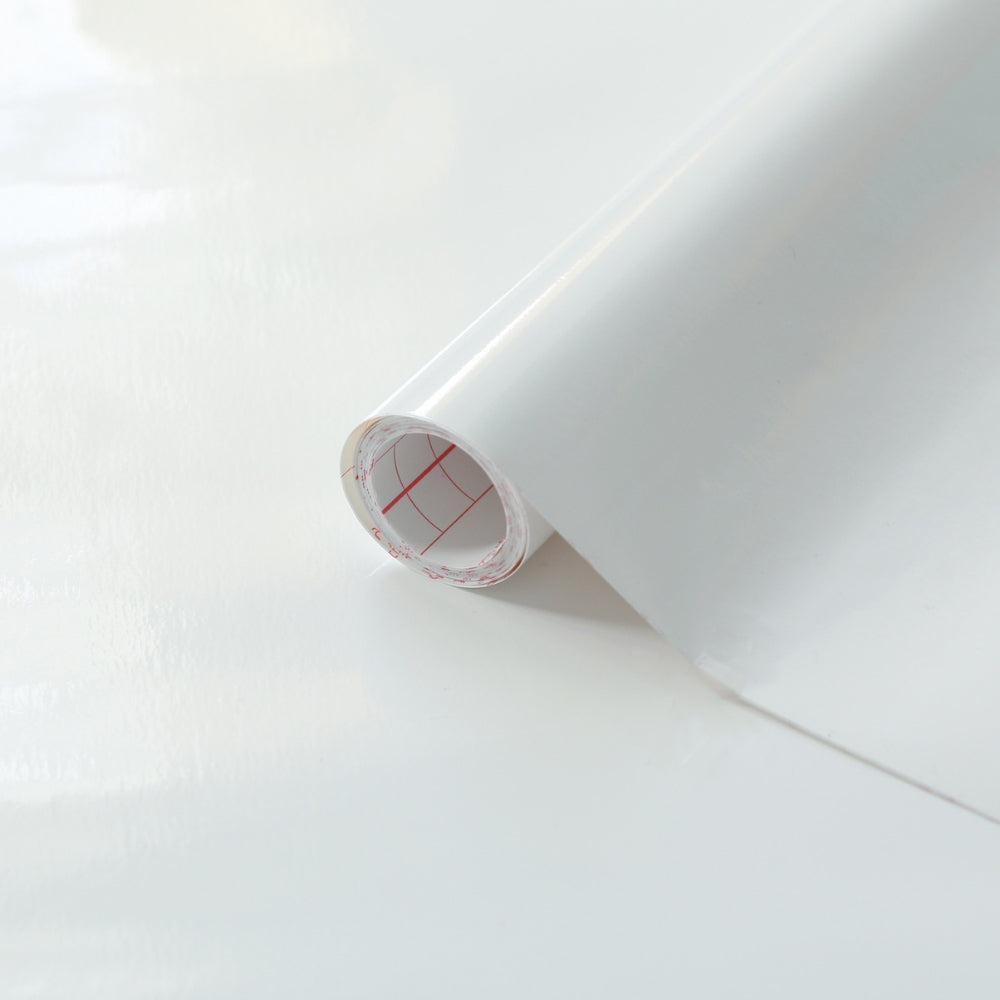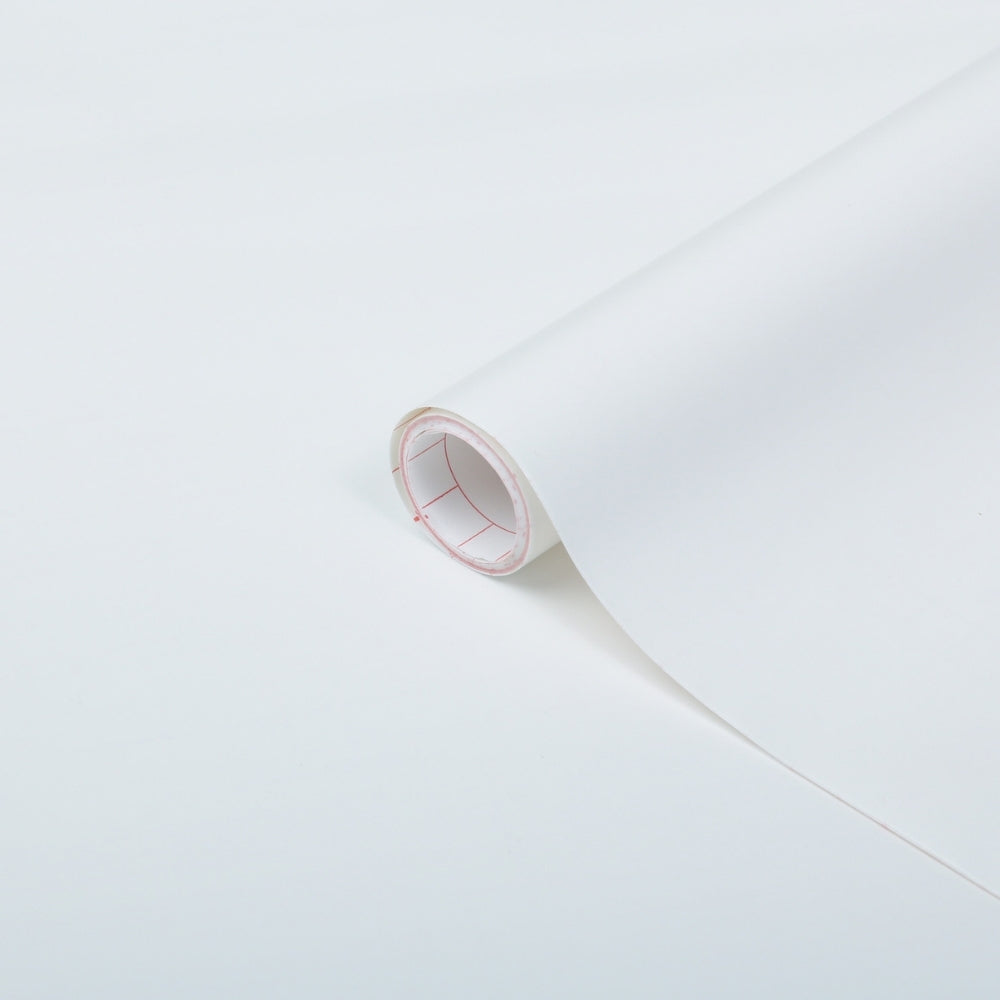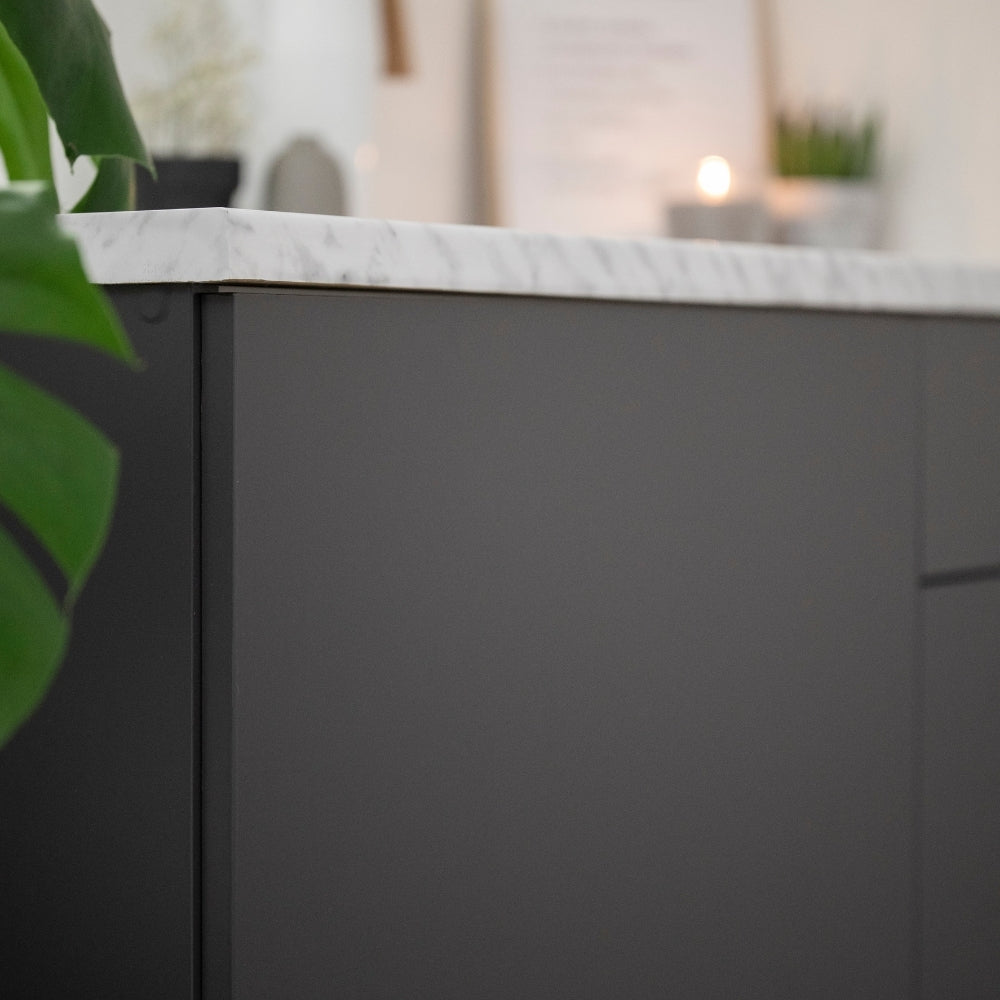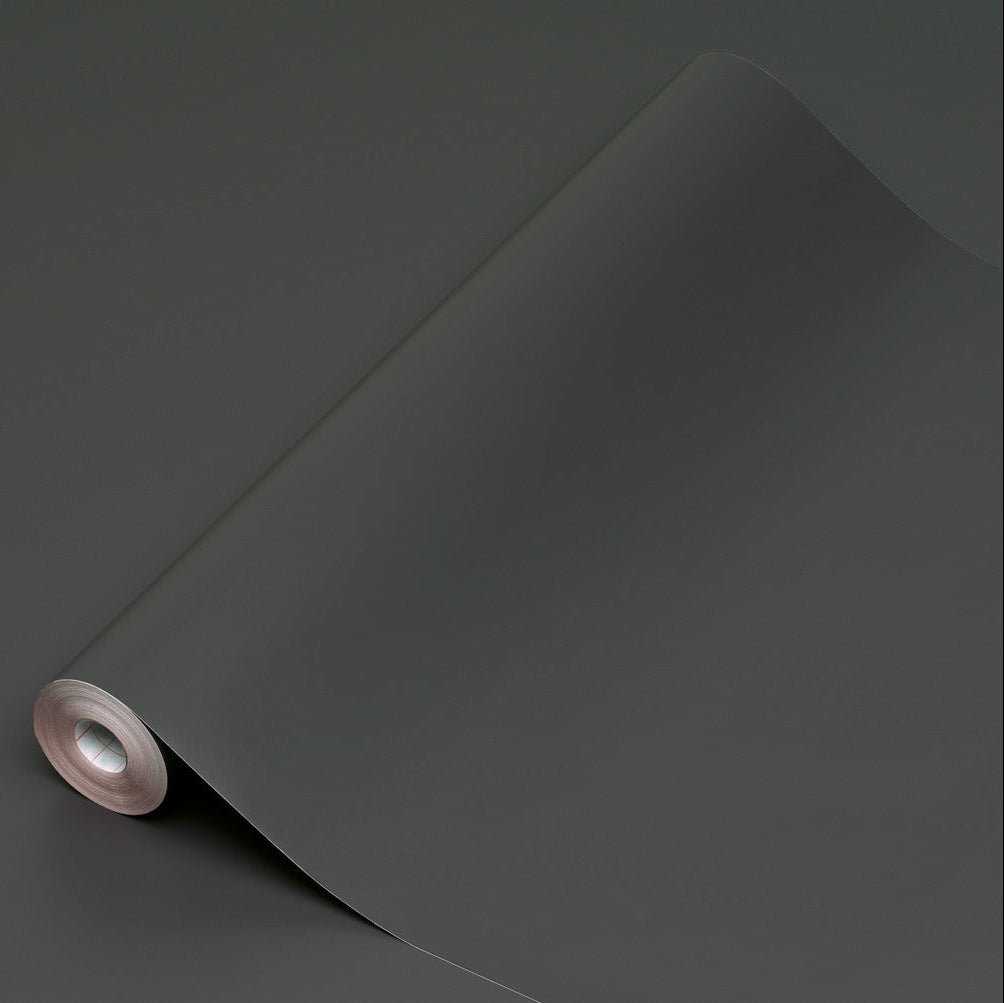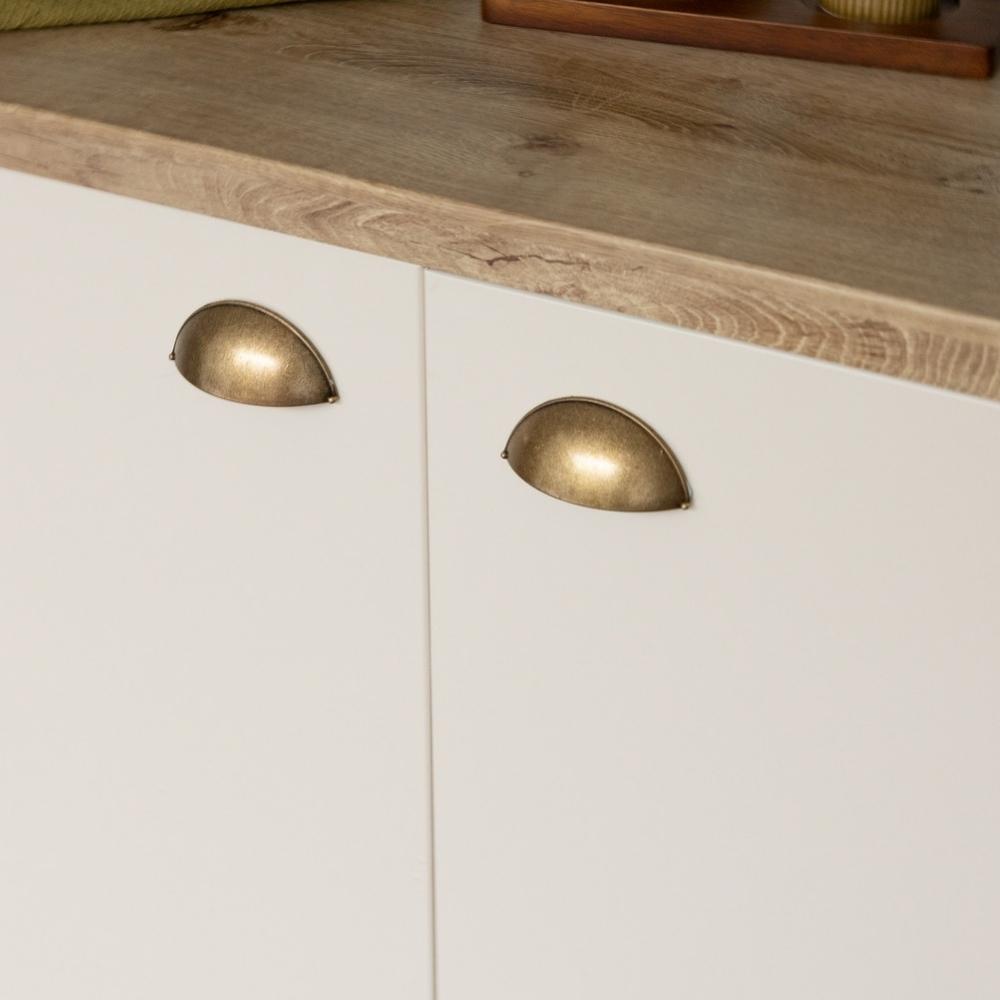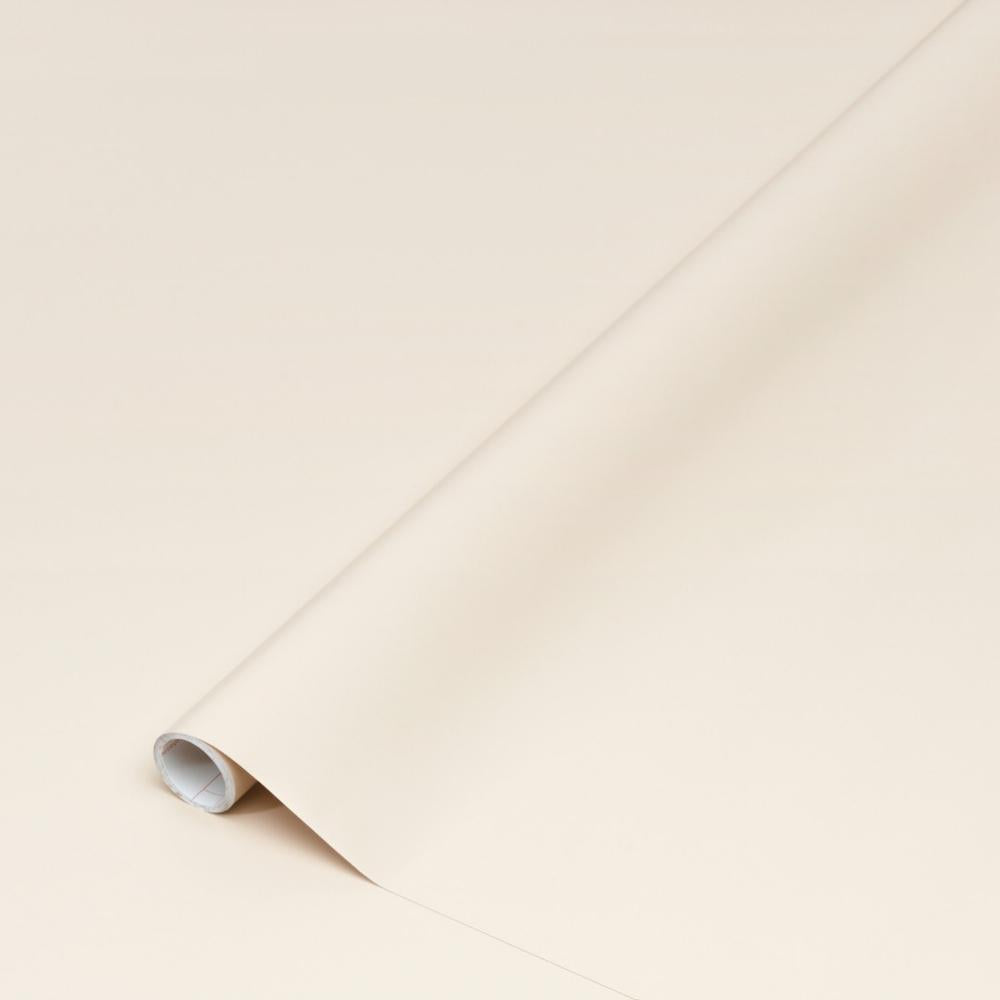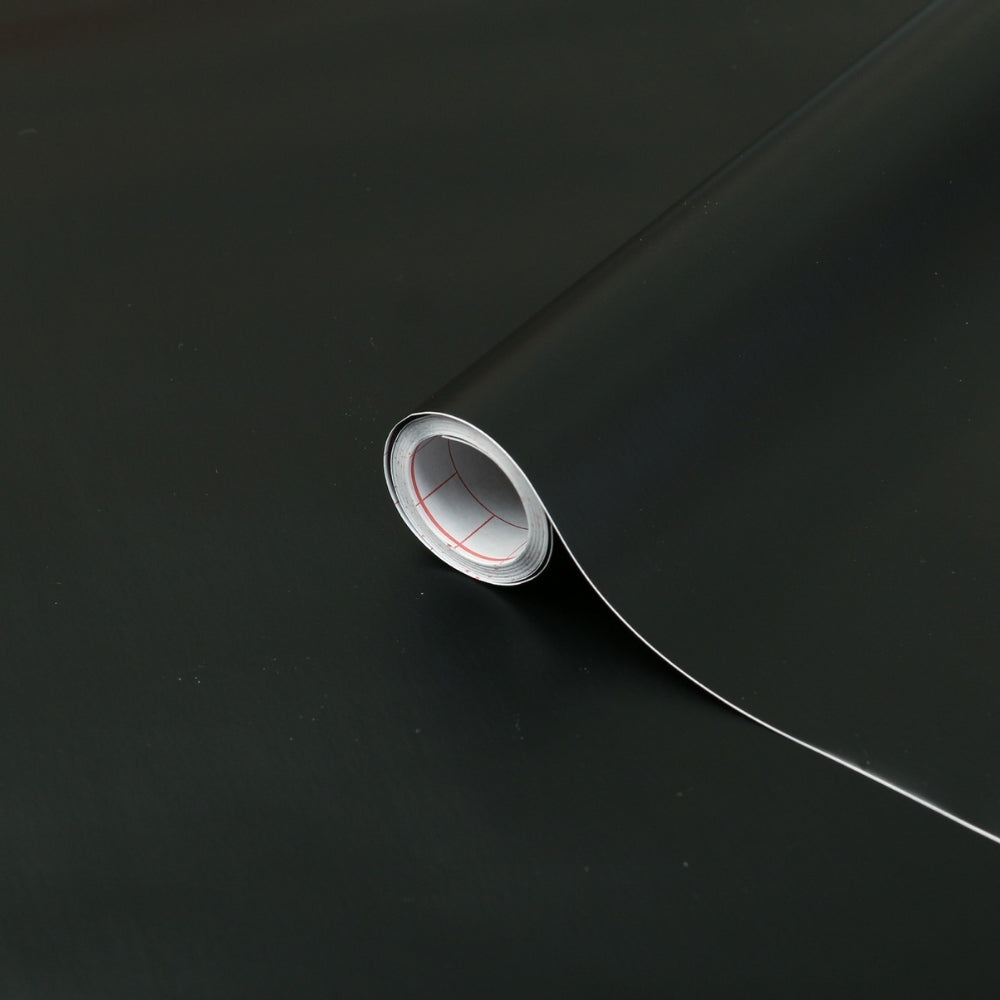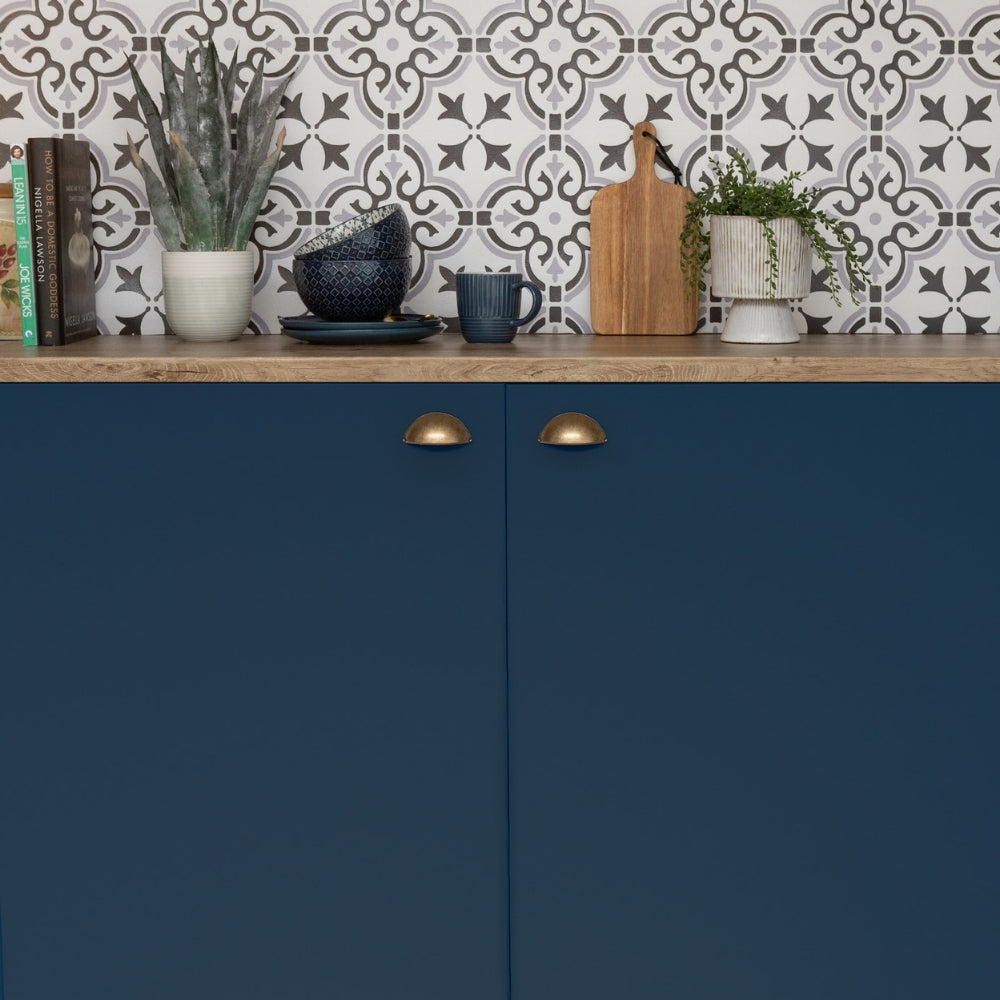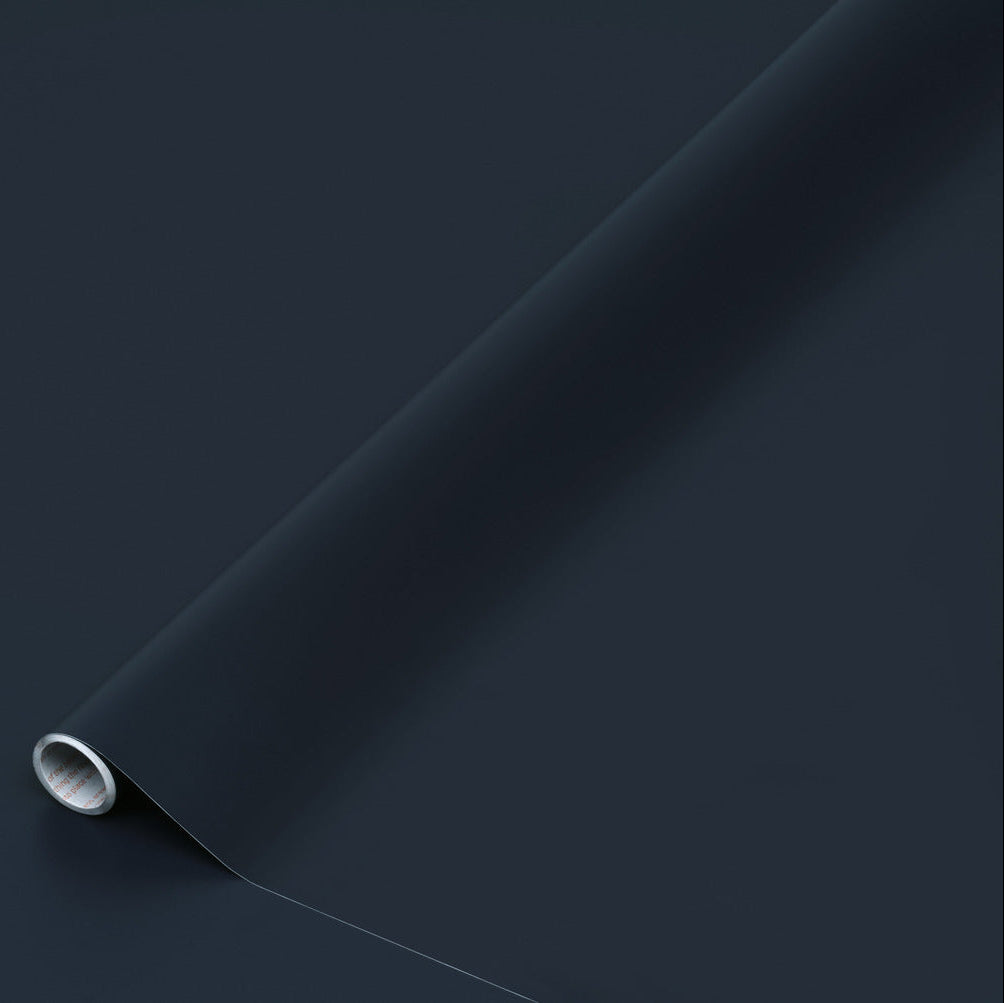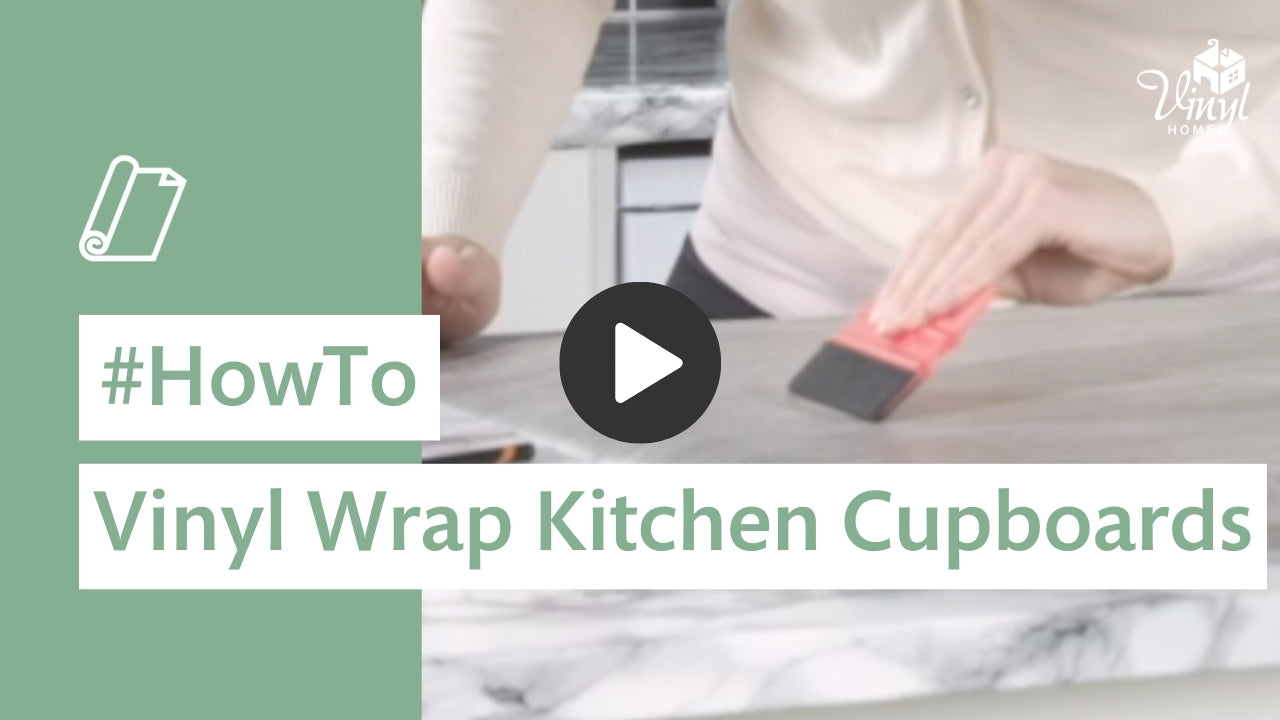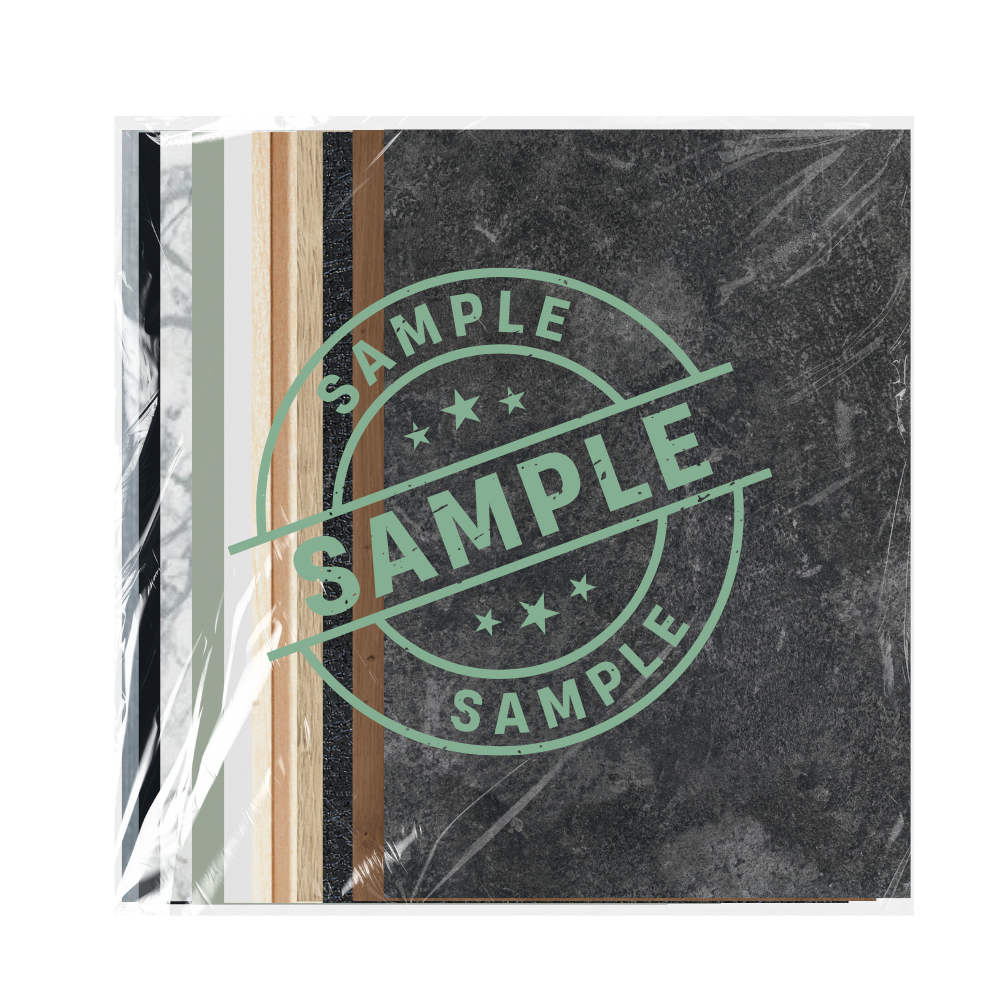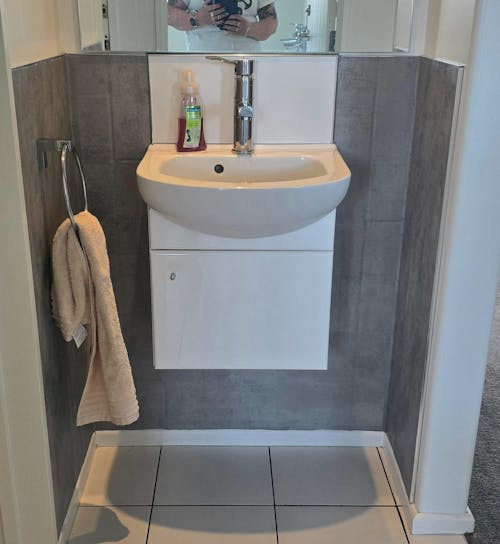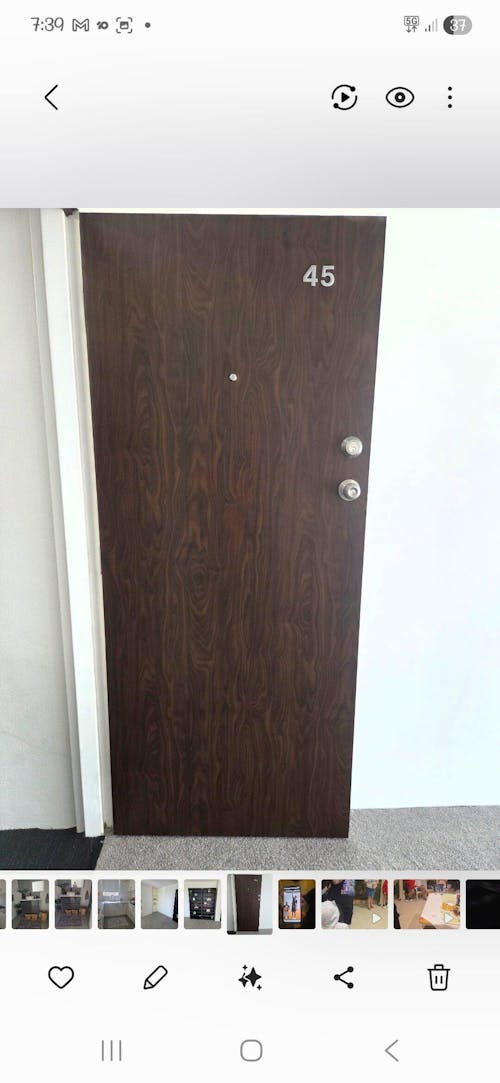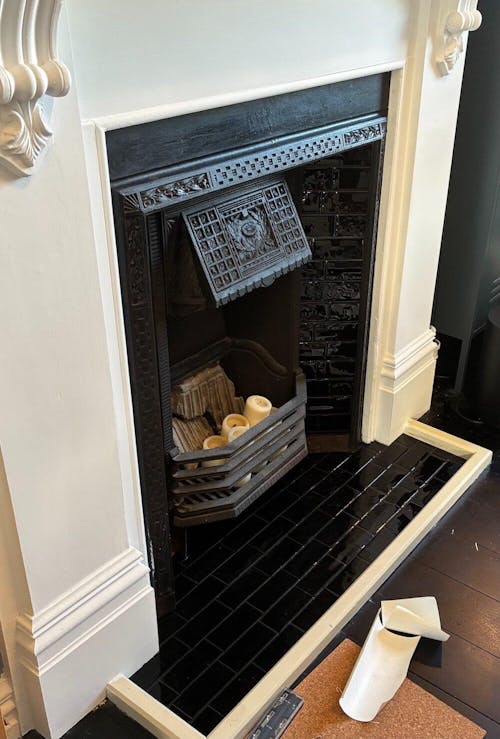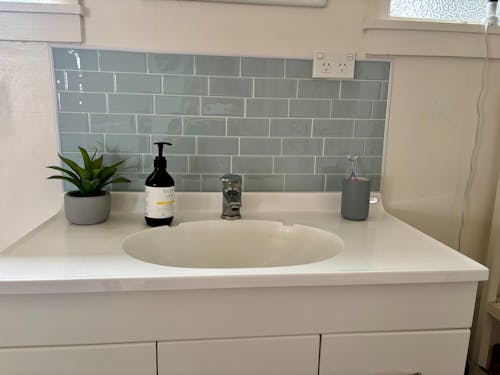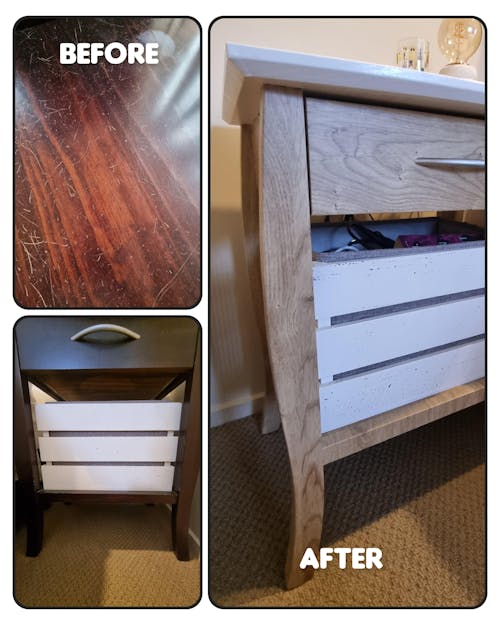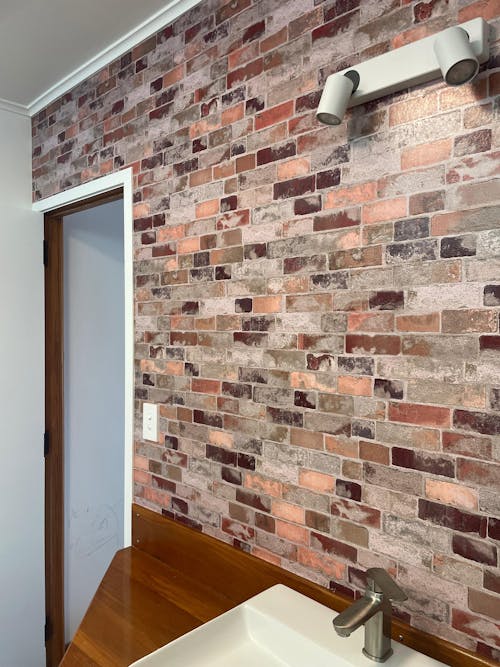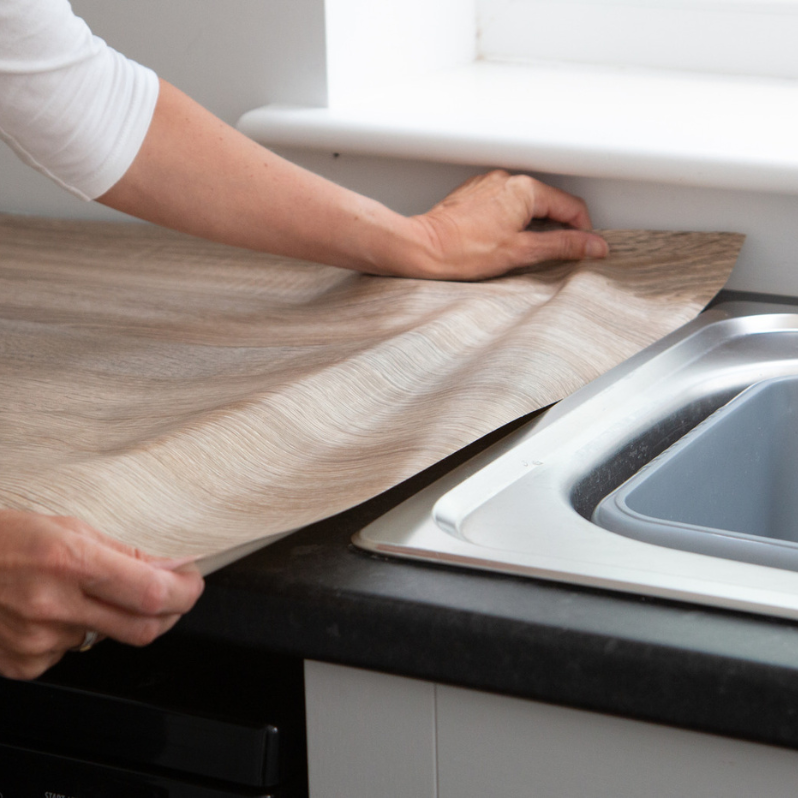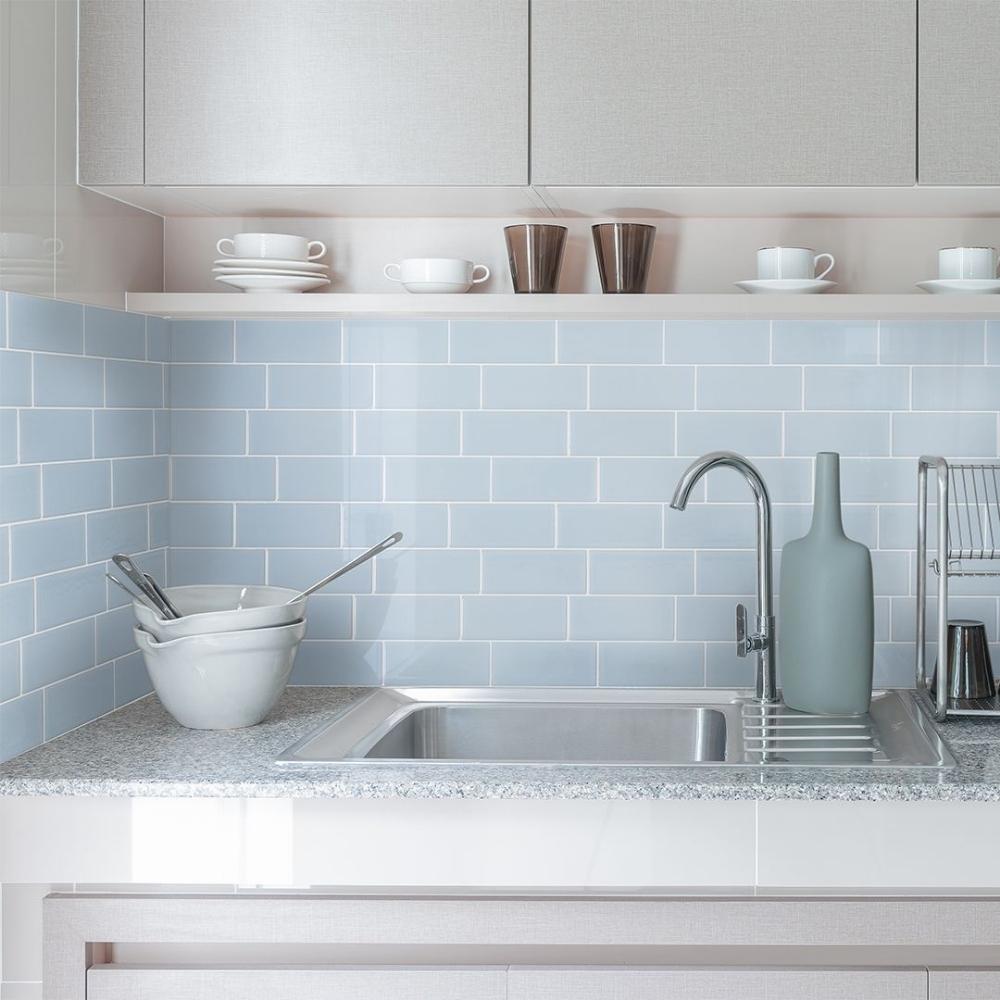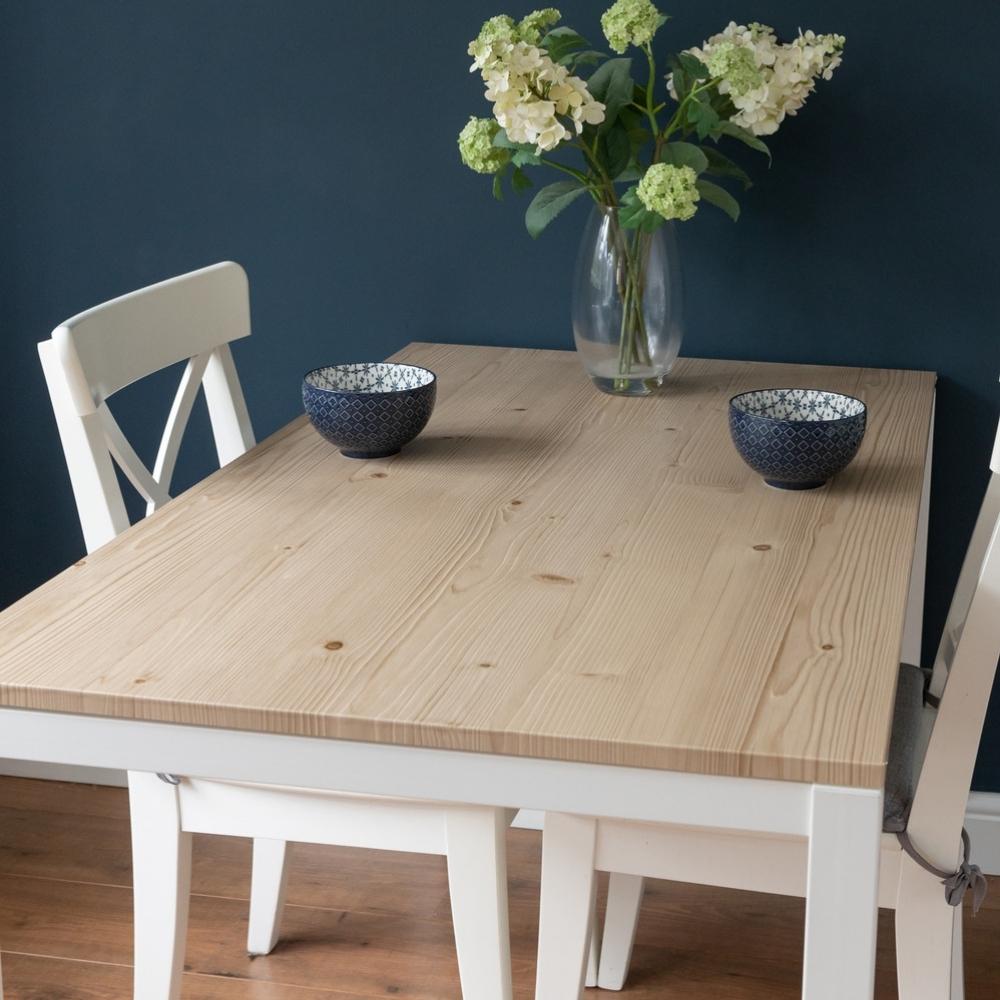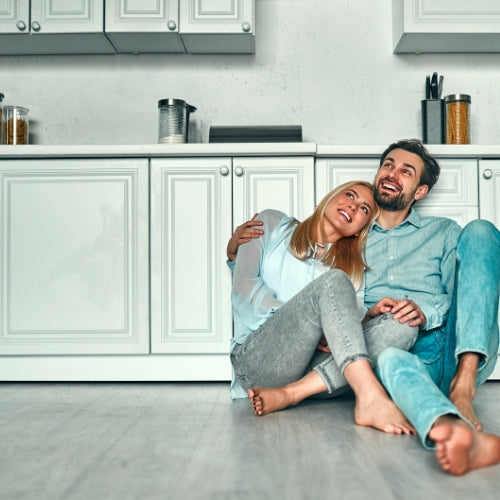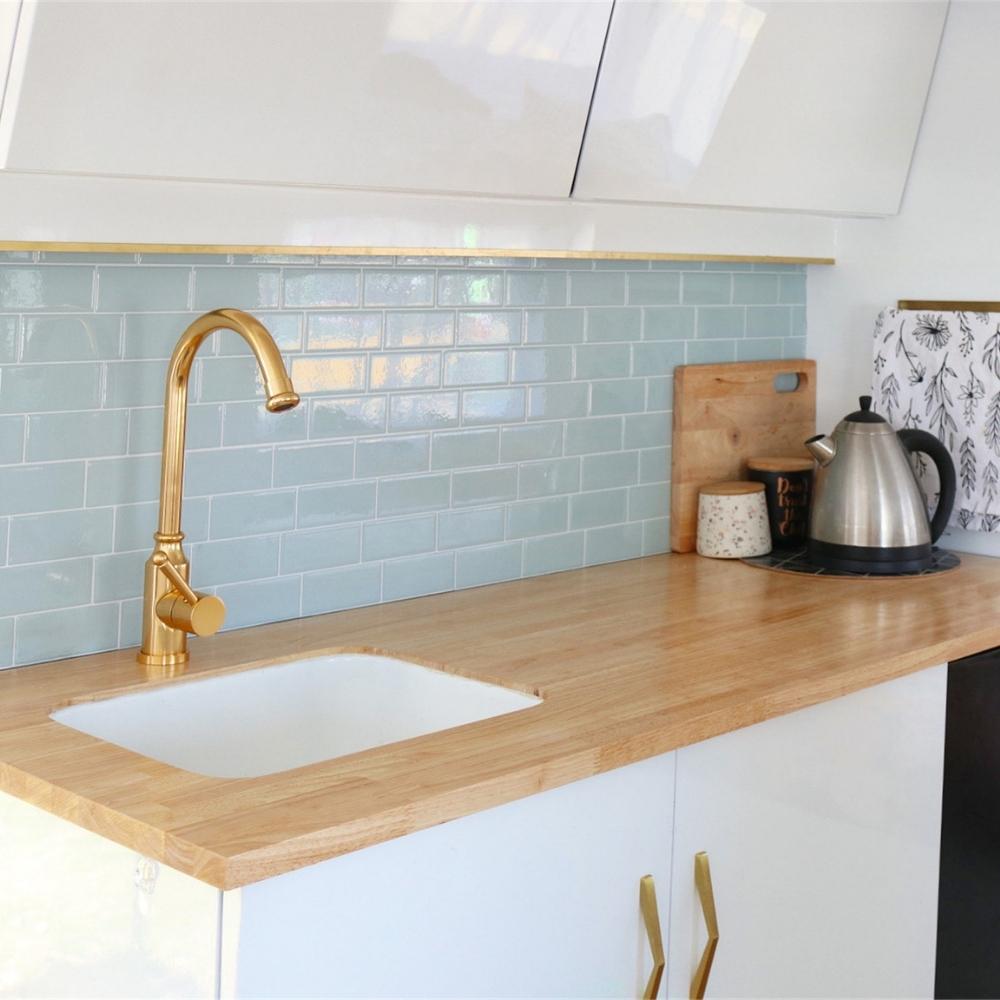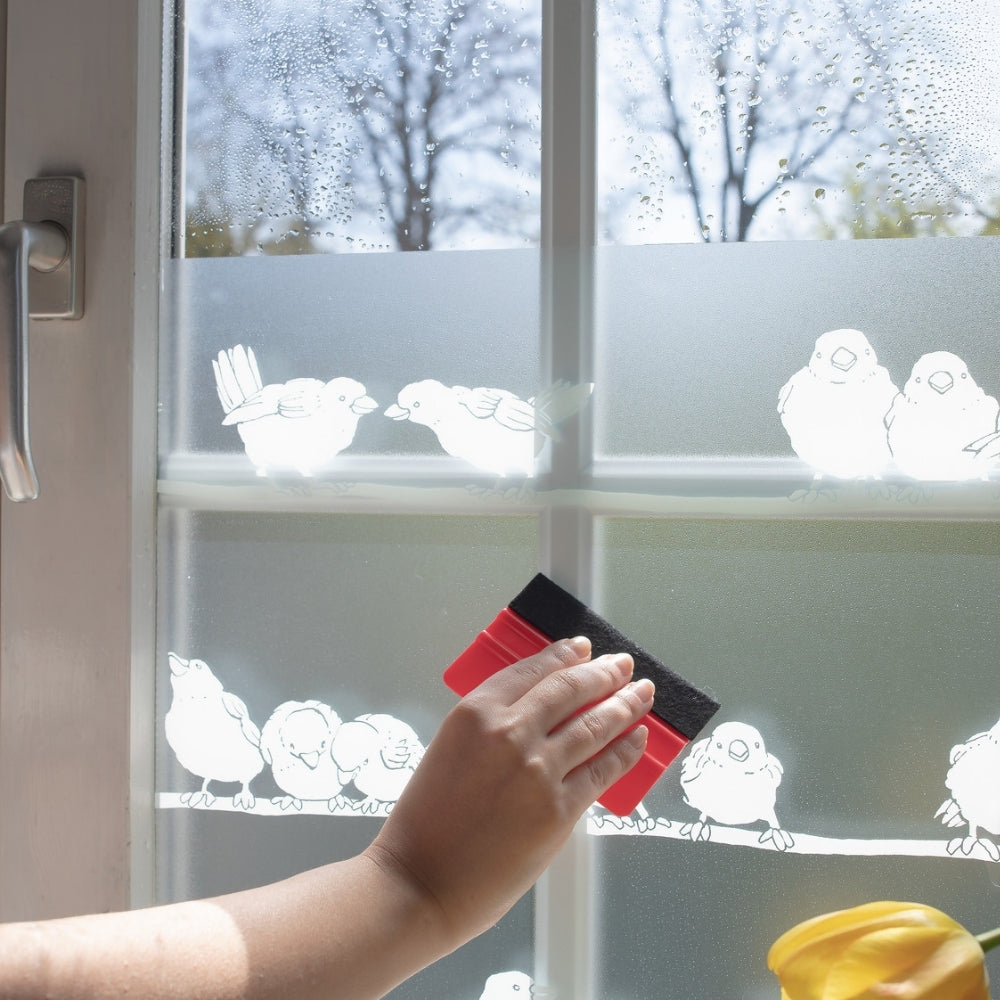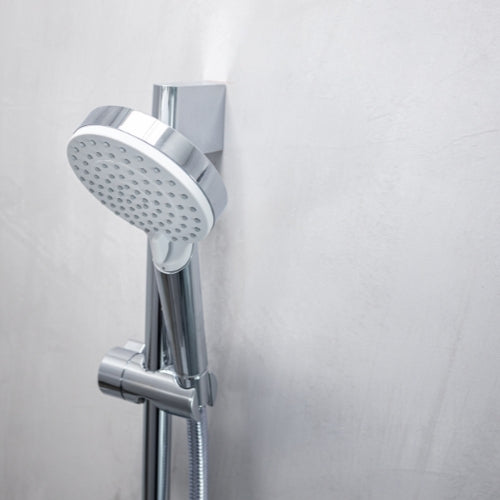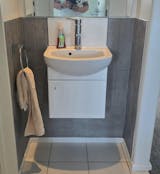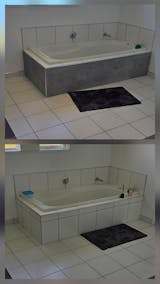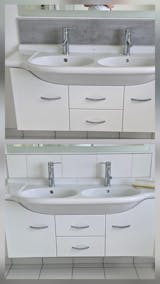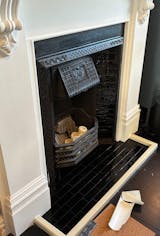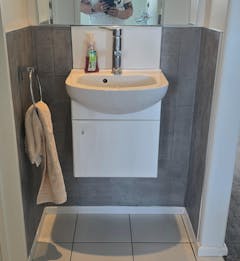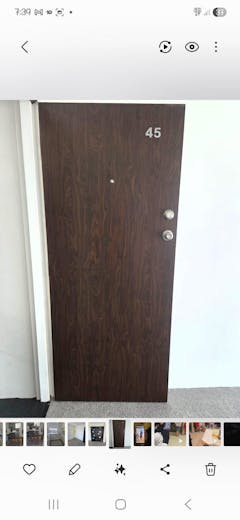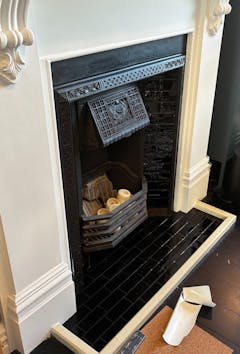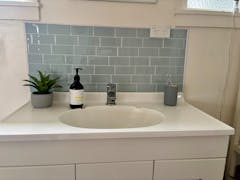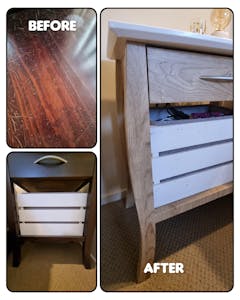The Ultimate Guide to Wrapping Kitchen & Bathroom Cupboards with Adhesive Vinyl
The Ultimate Guide to Wrapping Kitchen & Bathroom Cupboards with Adhesive Vinyl
If you're dreaming of a kitchen or bathroom refresh without the chaos or cost of a renovation, adhesive vinyl could be your new favourite hack. With the right prep, tools, and technique, you can achieve a premium look on cupboards, drawers, and side panels — even if you're a total DIY beginner. Here's everything you need to know.
What You'll Need
- d-c-fix adhesive vinyl
- Measuring tape & pencil
- Scissors
- Application kit (squeegee + craft knife)
- Ruler or straight edge
- Hairdryer or heat gun
- Sugar soap or degreaser + cloth
- Heavy books or masking tape (to hold vinyl in place)
- Wood filler + sanding block (if replacing handles)
Step 1: Measure & Plan Your Project
Start by measuring the height and width of each cupboard door, drawer, and any side panels you plan to wrap. Add an extra 1–2cm on each edge if you’re wrapping around the back.
How Much Vinyl Do You Need?
As a general rule of thumb:
- 1 metre per standard cupboard door or drawer set
- 2 metres for tall pantry-style cupboard doors
- Most customers use 15m rollsat 67.5cm wide, which typically covers 10–15 cupboard faces depending on layout and wrapping style.
Measure everything upfront and round up slightly to allow for trimming and mistakes.
Step 2: Choose Your Vinyl Design
Most customers go for either plain colours or woodgrain finishes, depending on their style and surface type.
Matte vinyl offers a soft, modern look and does a great job hiding fingerprints. However, keep in mind that our white matte option is the thinnest — it works best on perfectly smooth cupboard doors, as any imperfections may show through.
Glossy vinyl gives a sleek, light-reflecting finish. It looks high-end and is slightly thicker than the matte vinyl so tends to hide imperfections better.
Woodgrain designs are a favourite for kitchen and bathroom cupboards. They add natural texture and are especially forgiving on slightly uneven surfaces.
If your cupboards have a slightly textured surface or aren’t perfectly smooth, woodgrain vinyl is usually the most forgiving option.
Step 3: Remove Doors & Hardware (Optional)
For a smoother application, many customers remove the cupboard doors first. Most modern kitchen and bathroom cabinets use clip-on hinges, meaning:
- You don’t need to unscrew the hinges from the cabinet body.
- Simply press the release clip at the back of the hinge to detach the door.
💡 Planning to update your handles or knobs?
If the new ones have a different hole spacing, fill the old holes with wood filler and sand smooth before applying vinyl.
Step 4: Surface Prep
Clean all surfaces thoroughly with sugar soap or a degreasing cleaner to remove oils and residue. Pay extra attention to cupboard edges and around handles.
If you’ve patched old handle holes or have any surface damage, sand smooth and make sure the surface is completely dry before starting.
Step 5: Choose Your Wrapping Method
Depending on how visible your cupboard doors are (especially from the back), choose from the following wrapping styles:
1. Front Only
- Fastest method
- Trim vinyl flush to the edges
2. Partial Back Wrap
- Wrap around the edges and onto the back by 1–2cm
- Cleaner finish and adds extra durability to the edges.
- An added bonus is that it helps prevent the vinyl from being accidentally picked or lifted when grabbing the edge to open the door, which can happen over time with high-use cupboards.
3. Full Wrap
- Wrap front, edges, and entire back
- Best for doors that are fully visible from the back or open into the room
- Apply to front first, then pull tightly around and secure the back
🔸 Note: Cupboard edges are usually under 2cm thick — we recommend using a hairdryer to gently warm the vinyl along the edge before folding. This activates the adhesive instantly and helps prevent lifting.
Step 6: Apply the Vinyl
- Cut your vinyl with a few extra centimetres on all sides
- Peel back 10–15cm of the backing paper
- Line up carefully and press down the exposed adhesive
- Smooth with a squeegee from the centre outward
- Slowly peel more backing and continue applying
- Press and fold the vinyl around the edges (and onto the back, if wrapping)
💡 Wrinkles or bubbles? Warm the vinyl slightly and smooth them out. Use a pin to release trapped air if needed.
💡 Tricky corners? Watch our video below to master any corner like a pro.
Step 7: Drawers, Side Panels & Detailed Doors
- Drawers:Use the same method as flat doors. Be sure to align grain or patterns if drawers are stacked.
- Side Panels:Decide whether to wrap the full side or just the visible edge.
- Shaker/Grooved Doors:
✓Use heat to gently soften vinyl and press into grooves
✓Use a craft knife to cleanly trim around any detail
✓For very deep grooves, some customers opt to wrap only the flat outer frame for a "bordered" effect
Final Steps & Care
Once wrapped, reattach your doors and handles (or drill new holes if you’re updating them). Let the vinyl settle for a few hours before heavy use.
To keep your wrapped cupboards looking great:
- Wipe down with a soft cloth and mild detergent
- Avoid abrasive cleaners
- Avoid sharp objects close to the vinyl
- Avoid heat exposure over 75°C
Still Unsure Where to Start?
We’re here to help. Send us photos of your kitchen or bathroom cupboards, and we’ll recommend the best vinyl and wrapping approach for your setup.
If you're dreaming of a kitchen or bathroom refresh without the chaos or cost of a renovation, adhesive vinyl could be your new favourite hack. With the right prep, tools, and technique, you can achieve a premium look on cupboards, drawers, and side panels — even if you're a total DIY beginner. Here's everything you need to know.
What You'll Need
- d-c-fix adhesive vinyl
- Measuring tape & pencil
- Scissors
- Application kit (squeegee + craft knife)
- Ruler or straight edge
- Hairdryer or heat gun
- Sugar soap or degreaser + cloth
- Heavy books or masking tape (to hold vinyl in place)
- Wood filler + sanding block (if replacing handles)
Step 1: Measure & Plan Your Project
Start by measuring the height and width of each cupboard door, drawer, and any side panels you plan to wrap. Add an extra 1–2cm on each edge if you’re wrapping around the back.
How Much Vinyl Do You Need?
As a general rule of thumb:
- 1 metre per standard cupboard door or drawer set
- 2 metres for tall pantry-style cupboard doors
- Most customers use 15m rollsat 67.5cm wide, which typically covers 10–15 cupboard faces depending on layout and wrapping style.
Measure everything upfront and round up slightly to allow for trimming and mistakes.
Step 2: Choose Your Vinyl Design
Most customers go for either plain colours or woodgrain finishes, depending on their style and surface type.
Matte vinyl offers a soft, modern look and does a great job hiding fingerprints. However, keep in mind that our white matte option is the thinnest — it works best on perfectly smooth cupboard doors, as any imperfections may show through.
Glossy vinyl gives a sleek, light-reflecting finish. It looks high-end and is slightly thicker than the matte vinyl so tends to hide imperfections better.
Woodgrain designs are a favourite for kitchen and bathroom cupboards. They add natural texture and are especially forgiving on slightly uneven surfaces.
If your cupboards have a slightly textured surface or aren’t perfectly smooth, woodgrain vinyl is usually the most forgiving option.
Step 3: Remove Doors & Hardware (Optional)
For a smoother application, many customers remove the cupboard doors first. Most modern kitchen and bathroom cabinets use clip-on hinges, meaning:
- You don’t need to unscrew the hinges from the cabinet body.
- Simply press the release clip at the back of the hinge to detach the door.
💡 Planning to update your handles or knobs?
If the new ones have a different hole spacing, fill the old holes with wood filler and sand smooth before applying vinyl.
Step 4: Surface Prep
Clean all surfaces thoroughly with sugar soap or a degreasing cleaner to remove oils and residue. Pay extra attention to cupboard edges and around handles.
If you’ve patched old handle holes or have any surface damage, sand smooth and make sure the surface is completely dry before starting.
Step 5: Choose Your Wrapping Method
Depending on how visible your cupboard doors are (especially from the back), choose from the following wrapping styles:
1. Front Only
- Fastest method
- Trim vinyl flush to the edges
2. Partial Back Wrap
- Wrap around the edges and onto the back by 1–2cm
- Cleaner finish and adds extra durability to the edges.
- An added bonus is that it helps prevent the vinyl from being accidentally picked or lifted when grabbing the edge to open the door, which can happen over time with high-use cupboards.
3. Full Wrap
- Wrap front, edges, and entire back
- Best for doors that are fully visible from the back or open into the room
- Apply to front first, then pull tightly around and secure the back
🔸 Note: Cupboard edges are usually under 2cm thick — we recommend using a hairdryer to gently warm the vinyl along the edge before folding. This activates the adhesive instantly and helps prevent lifting.
Step 6: Apply the Vinyl
- Cut your vinyl with a few extra centimetres on all sides
- Peel back 10–15cm of the backing paper
- Line up carefully and press down the exposed adhesive
- Smooth with a squeegee from the centre outward
- Slowly peel more backing and continue applying
- Press and fold the vinyl around the edges (and onto the back, if wrapping)
💡 Wrinkles or bubbles? Warm the vinyl slightly and smooth them out. Use a pin to release trapped air if needed.
💡 Tricky corners? Watch our video below to master any corner like a pro.
Step 7: Drawers, Side Panels & Detailed Doors
- Drawers:Use the same method as flat doors. Be sure to align grain or patterns if drawers are stacked.
- Side Panels:Decide whether to wrap the full side or just the visible edge.
- Shaker/Grooved Doors:
✓Use heat to gently soften vinyl and press into grooves
✓Use a craft knife to cleanly trim around any detail
✓For very deep grooves, some customers opt to wrap only the flat outer frame for a "bordered" effect
Final Steps & Care
Once wrapped, reattach your doors and handles (or drill new holes if you’re updating them). Let the vinyl settle for a few hours before heavy use.
To keep your wrapped cupboards looking great:
- Wipe down with a soft cloth and mild detergent
- Avoid abrasive cleaners
- Avoid sharp objects close to the vinyl
- Avoid heat exposure over 75°C
Still Unsure Where to Start?
We’re here to help. Send us photos of your kitchen or bathroom cupboards, and we’ll recommend the best vinyl and wrapping approach for your setup.


